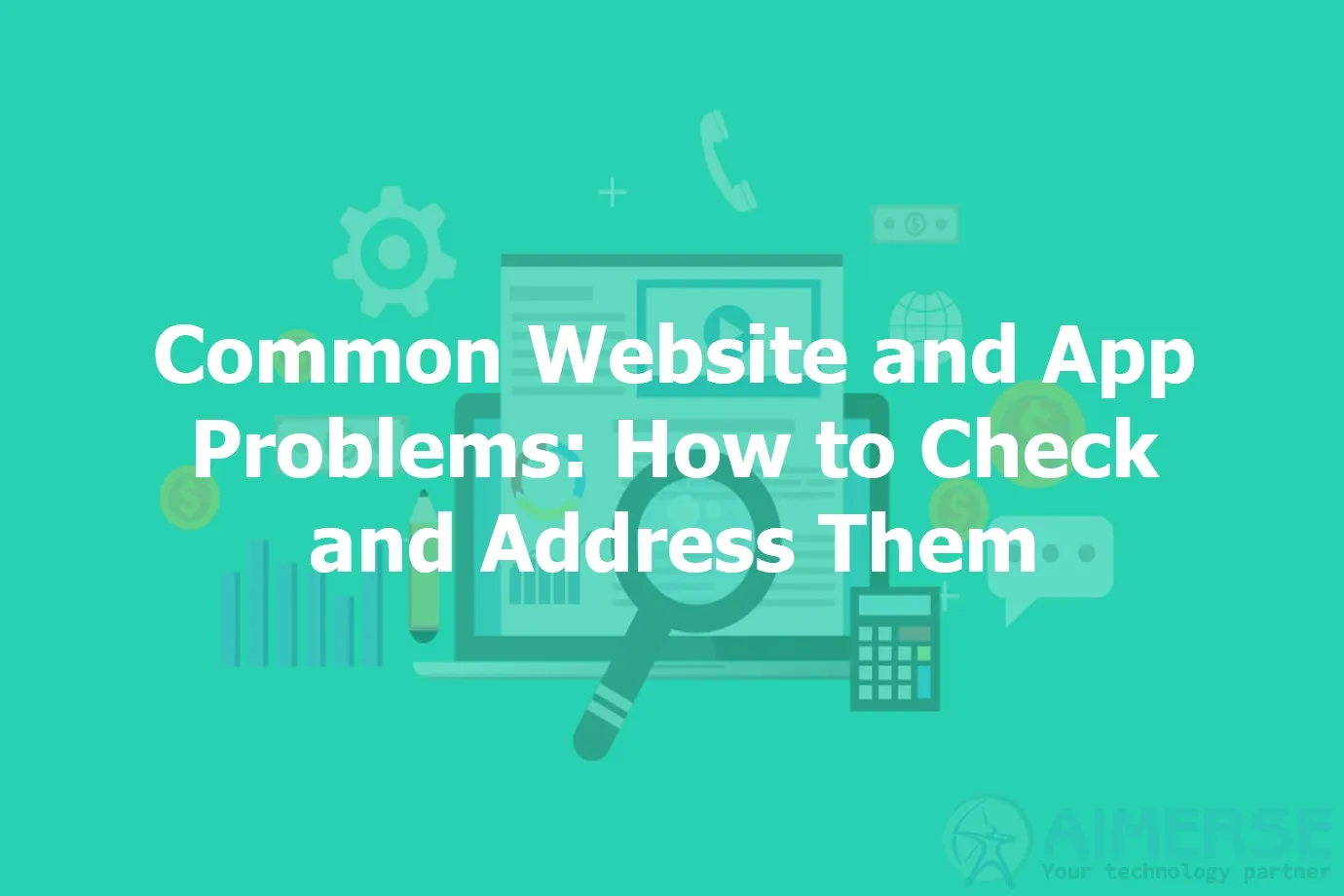Common Website and App Problems: How to Check and Address Them
In the digital age, a strong online presence is essential for businesses. Websites and applications serve as crucial touchpoints for customers, making it vital to ensure they are free from common issues. In this blog post, we will discuss prevalent website and app problems that can impact your business and provide you with steps to check and address them effectively.
We hope you have already read our previous article about Common Website and App Problems: How They Impact Your Business in which we have explained about the problems most website owners face. Let's talk about how you can check if your website is having problems.
Slow Loading Speed:
To check your website or app's loading speed, utilize online tools like Google PageSpeed Insights or GTmetrix. These tools analyze your site's performance and provide insights on areas for improvement. If the loading speed is subpar, consider optimizing images, minimizing code, and leveraging caching techniques. Additionally, selecting a reliable hosting provider and employing a content delivery network (CDN) can enhance loading speed.
Poor Mobile Responsiveness:
To assess your website or app's mobile responsiveness, use Google's Mobile-Friendly Test. This tool evaluates your site's display on mobile devices and offers suggestions for enhancement. If your site is not mobile-friendly, consider adopting responsive web design techniques, such as using fluid grids and CSS media queries. Alternatively, explore options for developing a dedicated mobile app that provides a seamless user experience.
Broken Links and Error Pages:
Regularly checking for broken links and error pages is crucial. Utilize online tools like Broken Link Checker or perform manual checks by navigating through your website or app. If broken links are found, update them to point to the correct destinations. Additionally, configure custom error pages to guide users when they encounter errors, ensuring they remain engaged and have an alternative path to continue browsing.
Security Vulnerabilities:
Conducting regular security audits is essential to identify and address vulnerabilities. Utilize vulnerability scanning tools, such as Nessus or OpenVAS, to assess your website or app's security posture. Ensure that security patches and updates are promptly applied to your platform, including all plugins, themes, and underlying software. Implement SSL certificates, use strong passwords, and consider employing a web application firewall (WAF) for added protection.
Outdated Design and Functionality:
To evaluate the design and functionality of your website or app, consider gathering feedback from users and conducting user testing sessions. Pay attention to their comments and observations regarding the user interface, navigation, and overall experience. Assess the visual aesthetics, ensuring they align with modern design trends. Explore competitor websites and apps for inspiration and incorporate fresh design elements and intuitive functionalities accordingly.
Conclusion:
By regularly checking your website or app for common issues, you can maintain an optimal user experience, enhance customer satisfaction, and drive business growth. Utilize online tools, perform manual checks, and gather user feedback to identify areas of improvement. Addressing slow loading speeds, poor mobile responsiveness, broken links, security vulnerabilities, and outdated design and functionality will position your website or app as reliable, user-friendly, and impactful.











